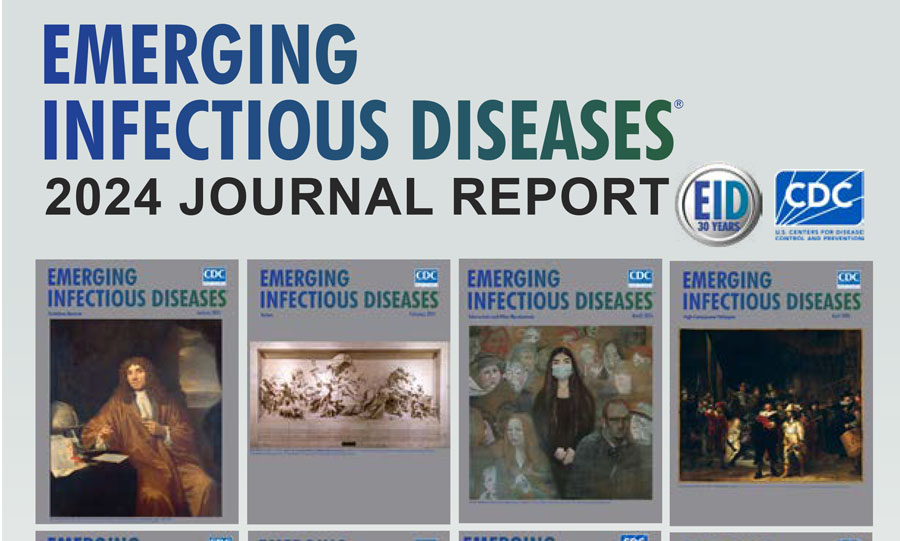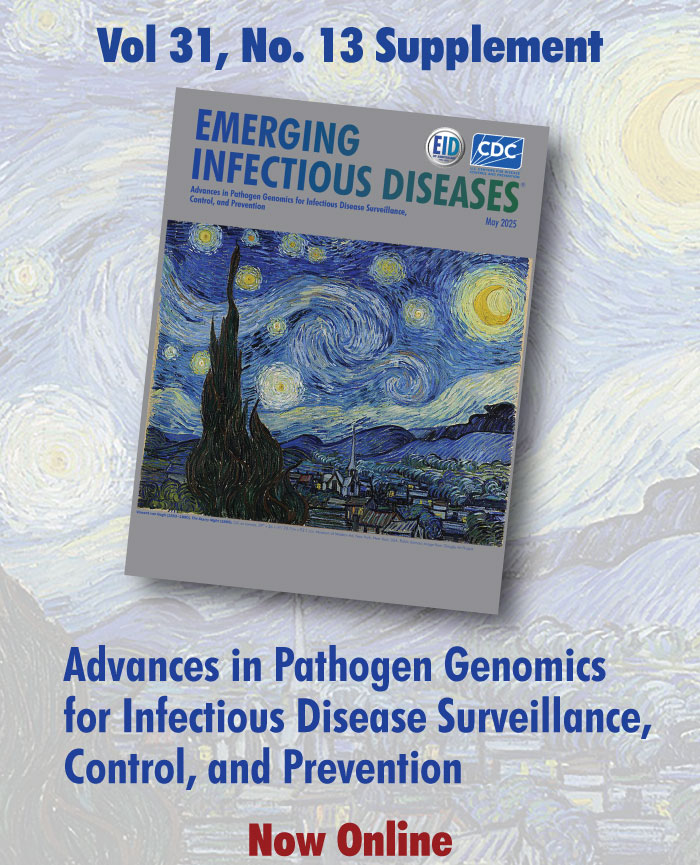Online Reports
Volume 30—2024
Volume 30, Number 12—December 2024
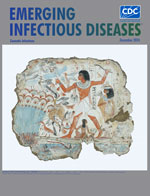
Operational Risk Assessment Tool for Evaluating Leishmania infantum Introduction and Establishment in the United States through Dog Importation
International pet travel and commercial operations have increased animal disease importation risks, including for Leishmania infantum, a deadly parasite of humans and domestic dogs. Collaborating as an interdisciplinary working group, we developed an operational tool for veterinary and public health practitioners to assess and manage L. infantum risk in dogs imported to the United States. Overall risk varies by dog, human, and geographic factors but could be high without proper controls. We determined dog risk management strategies should include application of sand fly insecticides and repellents, sterilization, and treatment. US public health authorities can use a One Health approach to manage L. infantum importation risks via infected dogs.
| EID | Marquez DR, Straily A, Nachman K, Norris DE, Davis MF, Petersen CA. Operational Risk Assessment Tool for Evaluating Leishmania infantum Introduction and Establishment in the United States through Dog Importation. Emerg Infect Dis. 2024;30(12):1-14. https://doi.org/10.3201/eid3012.231084 |
|---|---|
| AMA | Marquez DR, Straily A, Nachman K, et al. Operational Risk Assessment Tool for Evaluating Leishmania infantum Introduction and Establishment in the United States through Dog Importation. Emerging Infectious Diseases. 2024;30(12):1-14. doi:10.3201/eid3012.231084. |
| APA | Marquez, D. R., Straily, A., Nachman, K., Norris, D. E., Davis, M. F., & Petersen, C. A. (2024). Operational Risk Assessment Tool for Evaluating Leishmania infantum Introduction and Establishment in the United States through Dog Importation. Emerging Infectious Diseases, 30(12), 1-14. https://doi.org/10.3201/eid3012.231084. |
Volume 30, Number 11—November 2024
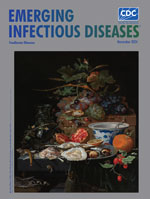
Rapid Decision Algorithm for Patient Triage during Ebola Outbreaks
The low specificity of Ebola virus disease clinical signs increases the risk for nosocomial transmission to patients and healthcare workers during outbreaks. Reducing this risk requires identifying patients with a high likelihood of Ebola virus infection. Analyses of retrospective data from patients suspected of having Ebola virus infection identified 13 strong predictors and time from disease onset as constituents of a prediction score for Ebola virus disease. We also noted 4 highly predictive variables that could distinguish patients at high risk for infection, independent of their scores. External validation of this algorithm on retrospective data revealed the probability of infection continuously increased with the score.
| EID | Ardiet D, Nsio J, Komanda G, Coulborn RM, Grellety E, Grandesso F, et al. Rapid Decision Algorithm for Patient Triage during Ebola Outbreaks. Emerg Infect Dis. 2024;30(11):1-11. https://doi.org/10.3201/eid3011.231650 |
|---|---|
| AMA | Ardiet D, Nsio J, Komanda G, et al. Rapid Decision Algorithm for Patient Triage during Ebola Outbreaks. Emerging Infectious Diseases. 2024;30(11):1-11. doi:10.3201/eid3011.231650. |
| APA | Ardiet, D., Nsio, J., Komanda, G., Coulborn, R. M., Grellety, E., Grandesso, F....Ahuka-Mundeke, S. (2024). Rapid Decision Algorithm for Patient Triage during Ebola Outbreaks. Emerging Infectious Diseases, 30(11), 1-11. https://doi.org/10.3201/eid3011.231650. |
Volume 30, Number 8—August 2024
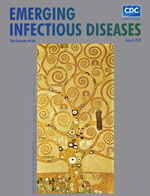
Proposal for a Global Classification and Nomenclature System for A/H9 Influenza Viruses
Influenza A/H9 viruses circulate worldwide in wild and domestic avian species, continuing to evolve and posing a zoonotic risk. A substantial increase in human infections with A/H9N2 subtype avian influenza viruses (AIVs) and the emergence of novel reassortants carrying A/H9N2-origin internal genes has occurred in recent years. Different names have been used to describe the circulating and emerging A/H9 lineages. To address this issue, an international group of experts from animal and public health laboratories, endorsed by the WOAH/FAO Network of Expertise on Animal Influenza, has created a practical lineage classification and nomenclature system based on the analysis of 10,638 hemagglutinin sequences from A/H9 AIVs sampled worldwide. This system incorporates phylogenetic relationships and epidemiologic characteristics designed to trace emerging and circulating lineages and clades. To aid in lineage and clade assignment, an online tool has been created. This proposed classification enables rapid comprehension of the global spread and evolution of A/H9 AIVs.
| EID | Fusaro A, Pu J, Zhou Y, Lu L, Tassoni L, Lan Y, et al. Proposal for a Global Classification and Nomenclature System for A/H9 Influenza Viruses. Emerg Infect Dis. 2024;30(8):1-13. https://doi.org/10.3201/eid3008.231176 |
|---|---|
| AMA | Fusaro A, Pu J, Zhou Y, et al. Proposal for a Global Classification and Nomenclature System for A/H9 Influenza Viruses. Emerging Infectious Diseases. 2024;30(8):1-13. doi:10.3201/eid3008.231176. |
| APA | Fusaro, A., Pu, J., Zhou, Y., Lu, L., Tassoni, L., Lan, Y....Liu, J. (2024). Proposal for a Global Classification and Nomenclature System for A/H9 Influenza Viruses. Emerging Infectious Diseases, 30(8), 1-13. https://doi.org/10.3201/eid3008.231176. |
Wastewater Target Pathogens of Public Health Importance for Expanded Sampling, Houston, Texas, USA
Building on the success of initiatives put forth during the COVID-19 pandemic response, US health officials are expanding wastewater surveillance programs to track other target pathogens and diseases of public health interest. The Houston Health Department in Houston, Texas, USA, conducted a hypothesis-generating study whereby infectious disease subject matter experts suggested potential targets. This study addressed 2 criteria recommended by the National Academies of Sciences, Engineering, and Medicine for selecting wastewater targets. Results can be used as a basis of a questionnaire for a future population-based study to recommend targets of highest priority to include for expanded wastewater sampling.
| EID | Sheth K, Hopkins L, Domakonda K, Stadler L, Ensor KB, Johnson CD, et al. Wastewater Target Pathogens of Public Health Importance for Expanded Sampling, Houston, Texas, USA. Emerg Infect Dis. 2024;30(8):14-17. https://doi.org/10.3201/eid3008.231564 |
|---|---|
| AMA | Sheth K, Hopkins L, Domakonda K, et al. Wastewater Target Pathogens of Public Health Importance for Expanded Sampling, Houston, Texas, USA. Emerging Infectious Diseases. 2024;30(8):14-17. doi:10.3201/eid3008.231564. |
| APA | Sheth, K., Hopkins, L., Domakonda, K., Stadler, L., Ensor, K. B., Johnson, C. D....Septimus, E. (2024). Wastewater Target Pathogens of Public Health Importance for Expanded Sampling, Houston, Texas, USA. Emerging Infectious Diseases, 30(8), 14-17. https://doi.org/10.3201/eid3008.231564. |
Volume 30, Number 4—April 2024
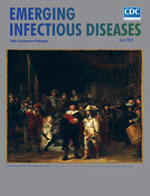
Prioritizing Mental Health within HIV and Tuberculosis Services in PEPFAR
Underprioritization of mental health is a global problem and threatens the decades-long progress of the US President’s Emergency Plan for AIDS Relief (PEPFAR) program. In recent years, mental health has become globally recognized as a part of universal healthcare, making this an opportune moment for the global community to integrate mental health services into routine programming. PEPFAR is well positioned to lead by example. We conceptualized 5 key strategies that might help serve as a framework to support mental health programming as part of PEPFAR’s current 5-year strategic plan. PEPFAR and the global community have an opportunity to identify mental health service gaps and interweave global mental health priorities with actions to end the HIV and TB epidemics by 2030.
| EID | Fukunaga R, Pierre P, Williams JK, Briceno-Robaugh R, Kalibala S, Peterson M, et al. Prioritizing Mental Health within HIV and Tuberculosis Services in PEPFAR. Emerg Infect Dis. 2024;30(4):1-5. https://doi.org/10.3201/eid3004.231726 |
|---|---|
| AMA | Fukunaga R, Pierre P, Williams JK, et al. Prioritizing Mental Health within HIV and Tuberculosis Services in PEPFAR. Emerging Infectious Diseases. 2024;30(4):1-5. doi:10.3201/eid3004.231726. |
| APA | Fukunaga, R., Pierre, P., Williams, J. K., Briceno-Robaugh, R., Kalibala, S., Peterson, M....Moonan, P. K. (2024). Prioritizing Mental Health within HIV and Tuberculosis Services in PEPFAR. Emerging Infectious Diseases, 30(4), 1-5. https://doi.org/10.3201/eid3004.231726. |
Volume 30, Number 2—February 2024
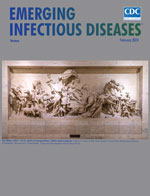
Key Challenges for Respiratory Virus Surveillance while Transitioning out of Acute Phase of COVID-19 Pandemic
To support the ongoing management of viral respiratory diseases while transitioning out of the acute phase of the COVID-19 pandemic, many countries are moving toward an integrated model of surveillance for SARS-CoV-2, influenza virus, and other respiratory pathogens. Although many surveillance approaches catalyzed by the COVID-19 pandemic provide novel epidemiologic insight, continuing them as implemented during the pandemic is unlikely to be feasible for nonemergency surveillance, and many have already been scaled back. Furthermore, given anticipated cocirculation of SARS-CoV-2 and influenza virus, surveillance activities in place before the pandemic require review and adjustment to ensure their ongoing value for public health. In this report, we highlight key challenges for the development of integrated models of surveillance. We discuss the relative strengths and limitations of different surveillance practices and studies as well as their contribution to epidemiologic assessment, forecasting, and public health decision-making.
| EID | Eales O, Plank MJ, Cowling BJ, Howden BP, Kucharski AJ, Sullivan SG, et al. Key Challenges for Respiratory Virus Surveillance while Transitioning out of Acute Phase of COVID-19 Pandemic. Emerg Infect Dis. 2024;30(2):1-9. https://doi.org/10.3201/eid3002.230768 |
|---|---|
| AMA | Eales O, Plank MJ, Cowling BJ, et al. Key Challenges for Respiratory Virus Surveillance while Transitioning out of Acute Phase of COVID-19 Pandemic. Emerging Infectious Diseases. 2024;30(2):1-9. doi:10.3201/eid3002.230768. |
| APA | Eales, O., Plank, M. J., Cowling, B. J., Howden, B. P., Kucharski, A. J., Sullivan, S. G....Shearer, F. M. (2024). Key Challenges for Respiratory Virus Surveillance while Transitioning out of Acute Phase of COVID-19 Pandemic. Emerging Infectious Diseases, 30(2), 1-9. https://doi.org/10.3201/eid3002.230768. |
